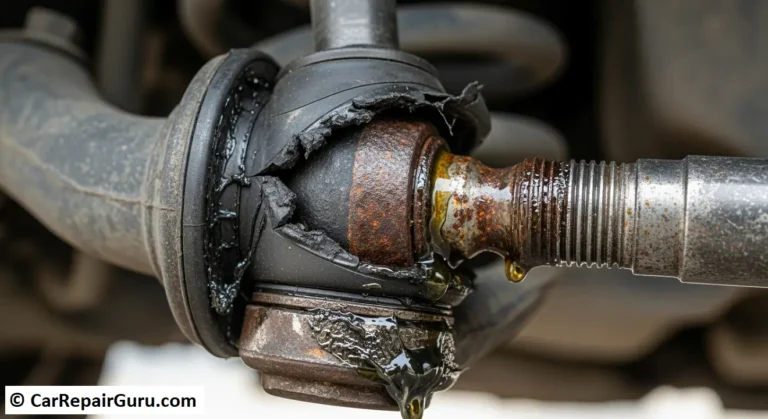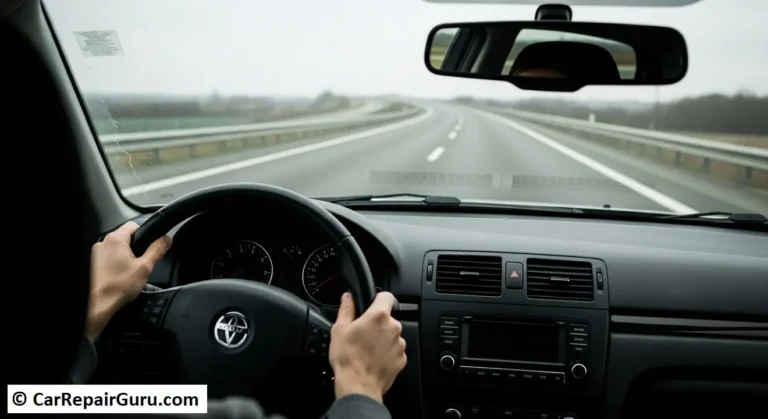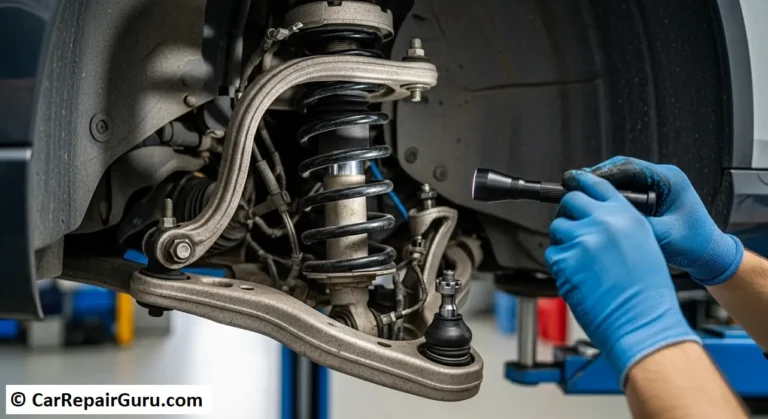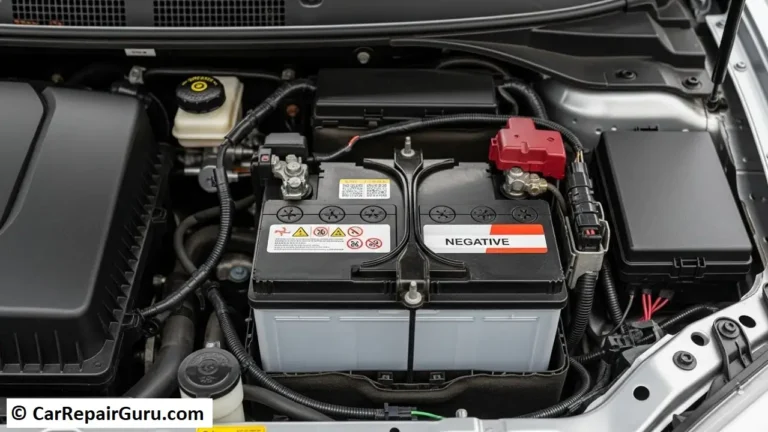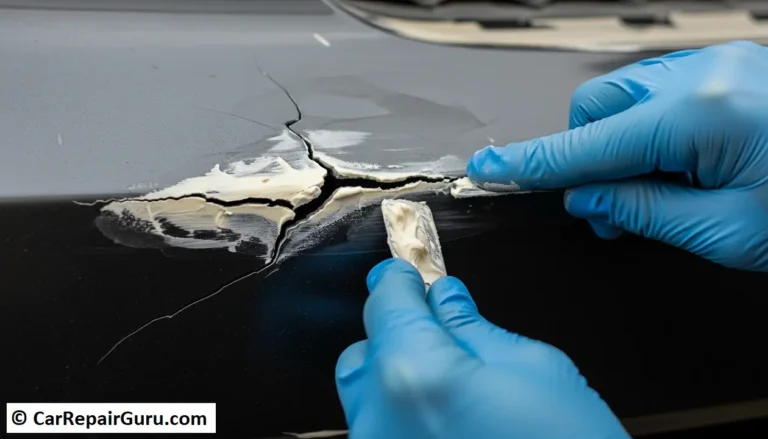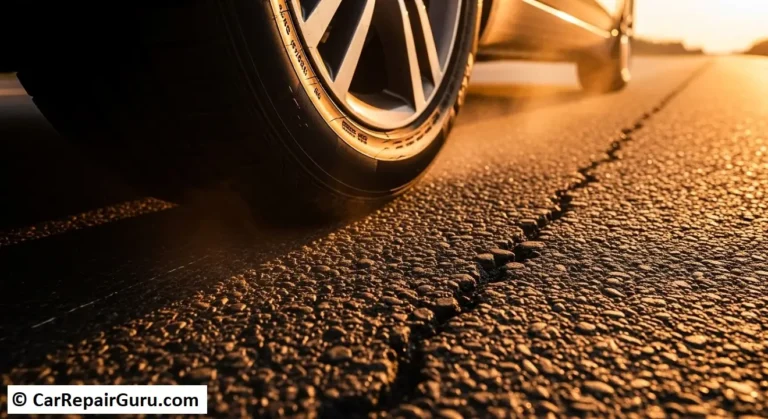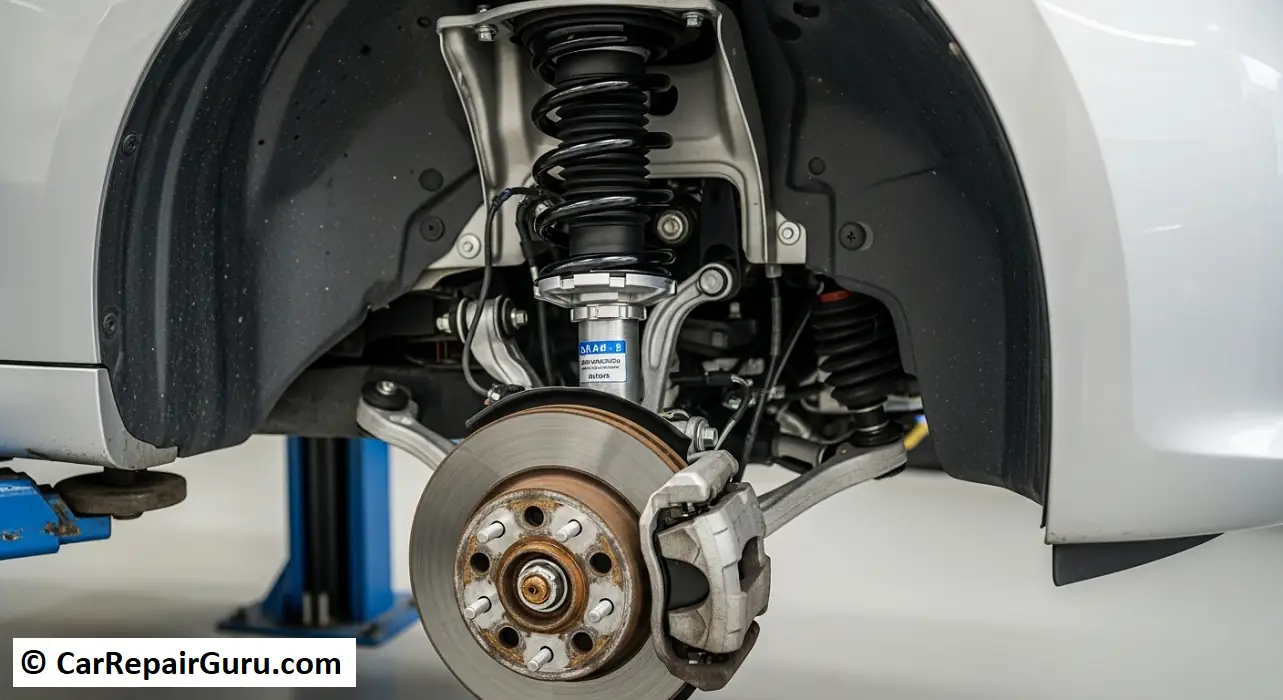
Is your car’s ride feeling less like a smooth cruise and more like a bumpy rollercoaster? Do you hear a strange clunking or knocking noise every time you go over a pothole? These aren’t just minor annoyances; they are often your vehicle’s way of telling you that a critical component needs attention. More often than not, the culprit is a part of your suspension system: the struts.
But what do struts actually do? Many drivers have heard the term, but few understand their vital role in how a car performs. This guide will change that. We’ll break down the three essential functions of struts, explain how to spot the warning signs of failure, and cover everything you need to know to ensure your vehicle remains safe, stable, and comfortable on the road.
What is a Car Strut? More Than Just a Spring
First, let’s clear up what a strut is. A car strut is a major structural component of your vehicle’s suspension system that also integrates into its steering system. Unlike some other suspension parts, a strut is a complete assembly that cleverly combines two key jobs into one unit, making it a cornerstone of modern vehicle design.
To truly understand the role of struts, you need to know what they’re made of.
The Key Components of a Strut Assembly
- Coil Spring: This is the large spring you can typically see wrapped around the strut. Its primary job is to support the entire weight of your vehicle at that corner and absorb the large impacts from bumps and potholes.
- Shock Absorber (Damper): Housed inside the main body of the strut is a shock absorber, or damper. Its job is to control the bouncing motion of the coil spring. Think of it this way: without a damper, your car would bounce up and down endlessly after hitting a bump, much like a pogo stick. The shock absorber tames that energy, keeping your ride smooth and your tires planted on the ground.
- Strut Mount: At the very top, a strut mount (or top mount) connects the entire assembly to the vehicle’s frame or chassis. It also contains a bearing that allows the strut to pivot as you turn the steering wheel, making it an integral part of your car’s steering.
The 3 Critical Functions of Your Car’s Struts
Now that we know what a strut is, let’s explore the three essential roles it plays every time you drive. These functions are directly tied to your vehicle’s safety, comfort, and handling.
1. Supporting the Vehicle’s Weight & Maintaining Ride Height
The most fundamental role of the strut is structural. The entire strut assembly, particularly the coil spring, bears the weight of the vehicle. This support is crucial for maintaining the correct ride height as designed by the manufacturer. Proper ride height isn’t just for looks; it ensures the vehicle’s geometry is correct for proper alignment, aerodynamics, and headlight aim.
2. Dampening Vibrations for a Smooth Ride (Ride Comfort)
This is the function most drivers notice first. As your car moves, the shock absorber element within the strut is constantly working to dampen vibrations from the road surface. It smooths out the harshness from cracks, bumps, and uneven pavement, preventing those jolts from transferring into the cabin. In short, functioning struts are the primary reason a drive can feel comfortable and controlled instead of jarring and chaotic.
3. Controlling Steering, Handling, and Braking (Safety & Control)
This is arguably the most critical role of struts. By managing the spring’s movement and keeping the tires in firm contact with the road, struts are essential for your ability to safely control the vehicle. This breaks down into three key areas:
- Responsive Steering: Properly functioning struts ensure the vehicle responds predictably when you turn the wheel.
- Stable Handling: They prevent excessive “body roll,” which is the swaying or leaning motion you feel when taking a sharp turn or cornering. This keeps the car stable and planted.
- Effective Braking: When you hit the brakes, a massive amount of weight shifts to the front of the car. Worn-out front struts can cause the front end to “nose dive” excessively. This can lift the rear wheels slightly, reducing their traction and significantly increasing the distance it takes to stop your car in an emergency.
Struts vs. Shocks – Clearing Up the Confusion
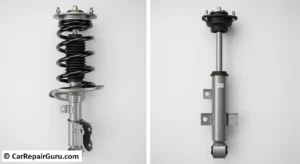
“Struts” and “shocks” are often used interchangeably, but they are not the same thing. This is one of the most common points of confusion for vehicle owners. While they perform a similar dampening function, their overall role is very different.
Here’s the simple breakdown:
| Struts | Shocks (Shock Absorbers) |
|---|---|
| Is a structural part of the suspension. | Is not a structural part of the suspension. |
| Supports the vehicle’s weight. | Does not support the vehicle’s weight. |
| Affects steering and wheel alignment angles. | Does not affect wheel alignment. |
| Is a complete assembly that contains a shock. | Is a single component that only dampens. |
The easiest way to remember it is this: All struts contain a shock absorber, but not all cars with shock absorbers have struts. A vehicle will have either struts or a separate shock and spring combination at each wheel, but never both.
7 Common Symptoms of Worn-Out Struts You Shouldn’t Ignore
Your car is very good at telling you when something is wrong. When it comes to struts, the signs can range from subtle to severe. If you notice any of the following, it’s time for a suspension inspection.
- A Bouncy or Unstable Ride: The classic sign. If your car continues to bounce or float after hitting a bump, the internal damper has failed.
- Clunking or Knocking Noises: A hollow “clunk” or “knock” when you drive over bumps, especially at lower speeds, often points to a worn-out strut mount or a failing internal component.
- “Nose Diving” During Braking: If the front end of your car dips dramatically when you apply the brakes, your front struts are no longer able to manage the weight transfer.
- Vehicle “Swaying” or Leaning on Turns: A feeling of instability or excessive body roll when cornering means the struts aren’t keeping your car level and stable.
- Uneven or Cupped Tire Wear: This is a major red flag. Worn struts allow the tire to bounce slightly off the pavement as it rotates, creating a scalloped or “cupped” wear pattern on the tread. This ruins tires quickly.
- Visible Fluid Leaks: Struts are hydraulic. If you see oily fluid leaking down the side of the strut body, it has failed and can no longer dampen vibrations.
- Poor Steering Response: A general feeling of looseness in the steering or a delayed reaction from the vehicle can indicate that the struts are no longer holding the suspension geometry firmly in place.
Is It Safe to Drive with Bad Struts?
In a word: No. While you might be able to “get by” for a short time, driving with bad struts is not recommended. It severely compromises your ability to control the vehicle, dramatically increases your braking distance, and makes your car unpredictable in an emergency maneuver. Your safety, and the safety of others, depends on a healthy suspension system.
How Ignoring Bad Struts Costs You More
Thinking of putting off that strut replacement? You might want to reconsider. A failing strut isn’t an isolated problem; it sets off a chain reaction of wear and tear that can damage other expensive components. Ignoring the issue will almost certainly cost you more money in the long run.
Key Components at Risk
- Tires: This is the most immediate and costly consequence. The bouncing and vibration from bad struts will destroy a new set of tires in a fraction of their normal lifespan, forcing you to replace them prematurely.
- Ball Joints and Tie Rods: These critical steering and suspension pivots are hammered with excessive force when a strut fails. This accelerates their wear, leading to loose steering and another necessary repair.
- Control Arm Bushings: These rubber bushings are designed to absorb minor vibrations, but they can’t handle the violent shaking caused by a worn strut. They will crack and fail, leading to more suspension noise and instability.
- Wheel Bearings: A bad strut causes the wheel to vibrate and move erratically, putting immense, uneven stress on the wheel bearing. This can lead to a noisy, grinding bearing that requires immediate replacement.
How Often Should You Replace Struts?
There is no single “magic number” for strut replacement, but a general guideline is to have them inspected around 50,000 miles and plan for potential replacement between 50,000 and 100,000 miles.
However, this can vary wildly. If you frequently drive on rough, pothole-filled roads or carry heavy loads, your struts will wear out much faster. The best approach is to pay attention to the symptoms listed above rather than relying strictly on mileage.
Should You Replace Struts in Pairs?
Yes, always. Struts should always be replaced in pairs (both front struts or both rear struts at the same time). Replacing only one side creates a dangerous imbalance. The new strut will be stiff and responsive, while the old one will be soft and weak. This mismatch can cause unpredictable handling, pulling to one side, and accelerated wear on other suspension parts.
The Strut Replacement Process – A Job for the Pros?
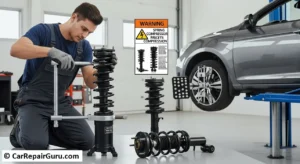
Understanding what’s involved in a strut replacement can help you make an informed decision, whether you’re a DIY enthusiast or taking your car to a professional technician.
DIY vs. Professional Replacement
While some automotive repairs are great for a weekend project, strut replacement is generally not one of them. The job is considered high-difficulty and requires specialized tools, including a spring compressor.
A critical safety warning: The coil spring on a strut is compressed with thousands of pounds of force. If a spring compressor tool fails or is used improperly, that spring can release its energy explosively, causing catastrophic damage and life-threatening injury. For this reason, it is strongly recommended that strut replacement be left to certified technicians with the proper equipment and training.
Why a Wheel Alignment is Non-Negotiable After Strut Replacement
This is a step you absolutely cannot skip. Because the strut is a core part of your steering and suspension geometry, removing the old one and installing a new one will always alter your vehicle’s alignment angles.
If you skip the alignment, you will experience steering pull, a crooked steering wheel, and—most importantly—you will cause rapid and uneven wear on your brand-new tires, completely wasting your investment. A four-wheel alignment is an essential final step of any strut replacement job.
The Bottom Line – Struts are Vital for Your Car’s Health and Your Safety
As we’ve seen, the role of struts goes far beyond providing a cushy ride. They are a fundamental component responsible for supporting your vehicle’s weight, keeping your tires on the road, and giving you the control you need to steer and brake safely.
By understanding what they do and learning to recognize the signs of failure, you can address issues promptly, preventing more expensive repairs down the road and ensuring every drive is a safe one.
If you’re noticing any of the symptoms we’ve discussed, don’t wait for the problem to get worse. Schedule a professional suspension inspection with a certified technician today to protect your investment and your safety.
Frequently Asked Questions About Car Struts
What does a bad strut sound like?
A: A bad strut typically makes a hollow “clunking” or “knocking” sound when you drive over bumps. You may also hear a creaking or groaning noise when turning the steering wheel, which often points to a worn strut mount.
Will new struts make my ride smoother?
Absolutely. Replacing worn-out struts is one of the most effective ways to restore your vehicle’s original ride quality. You’ll notice an immediate improvement in smoothness, stability, and quietness.
What is the average cost to replace struts?
The cost varies significantly based on your vehicle’s make and model, the brand of the parts, and local labor rates. Expect to pay anywhere from $400 to over $1,500 for a pair, including parts, labor, and the essential wheel alignment.
Can bad struts cause a vibration?
Yes. While vibrations are often linked to unbalanced tires, bad struts can definitely be a cause. As they fail, they can’t control the tire’s movement, leading to vibrations that you may feel in the steering wheel or through the floor of the car, especially at higher speeds.
